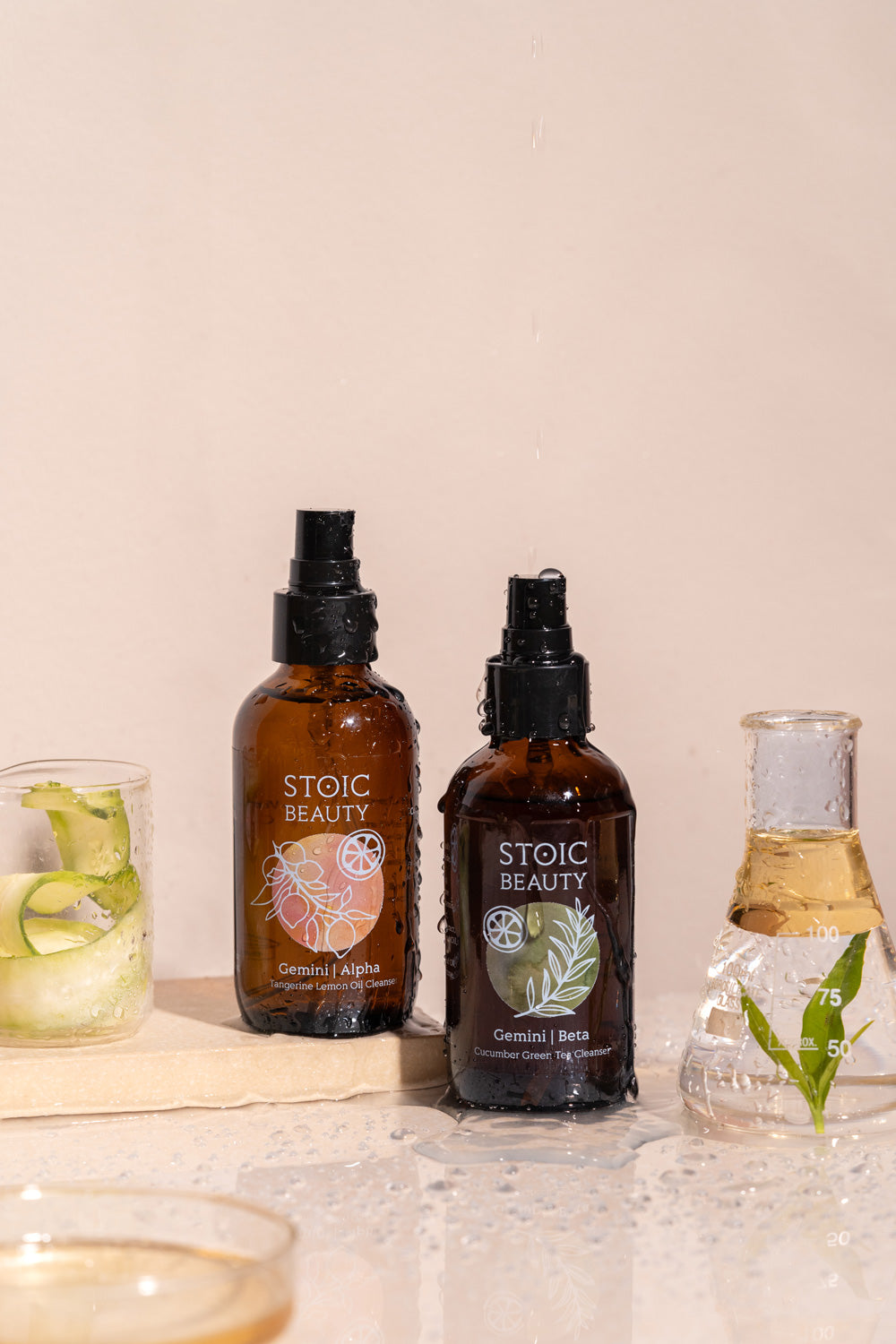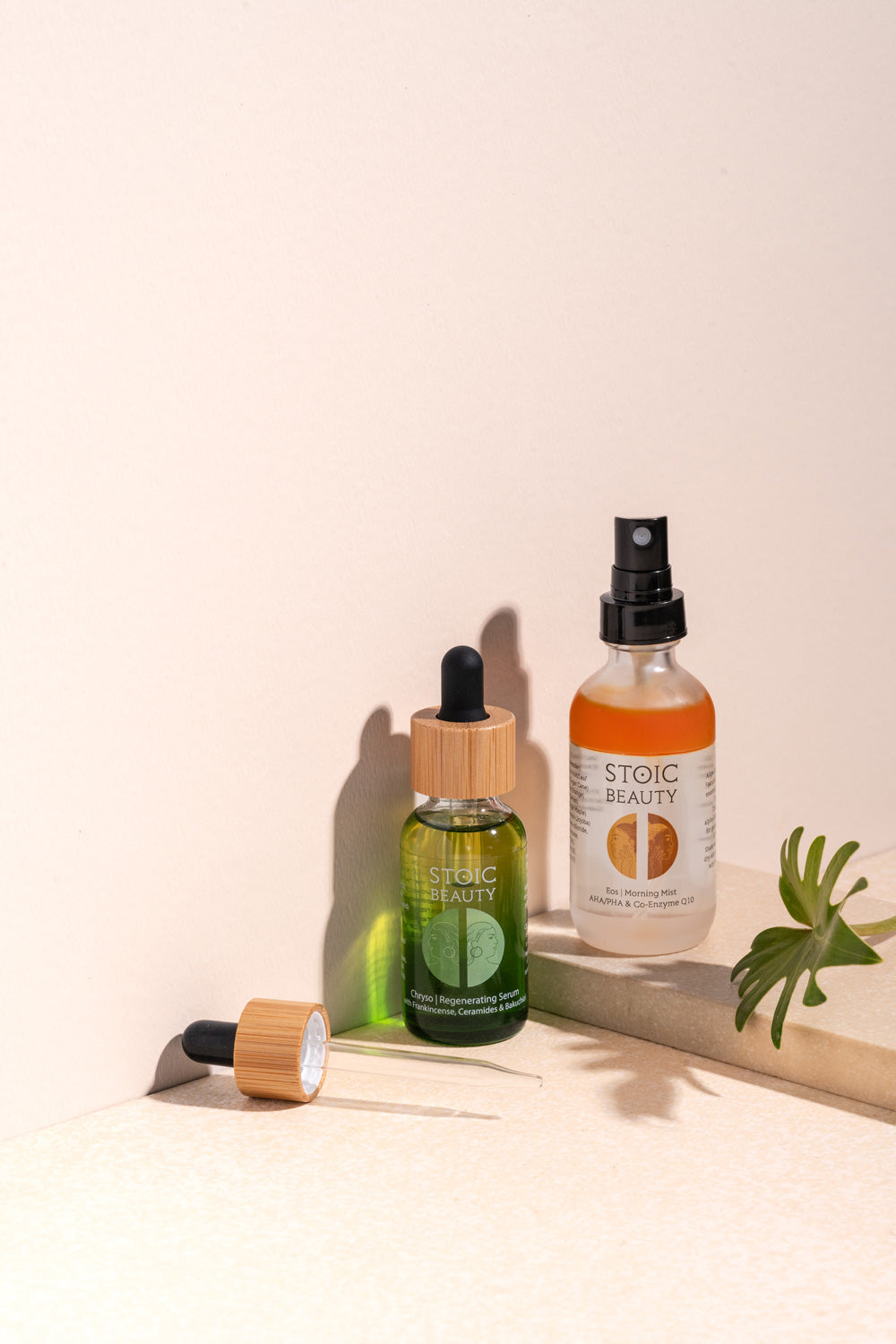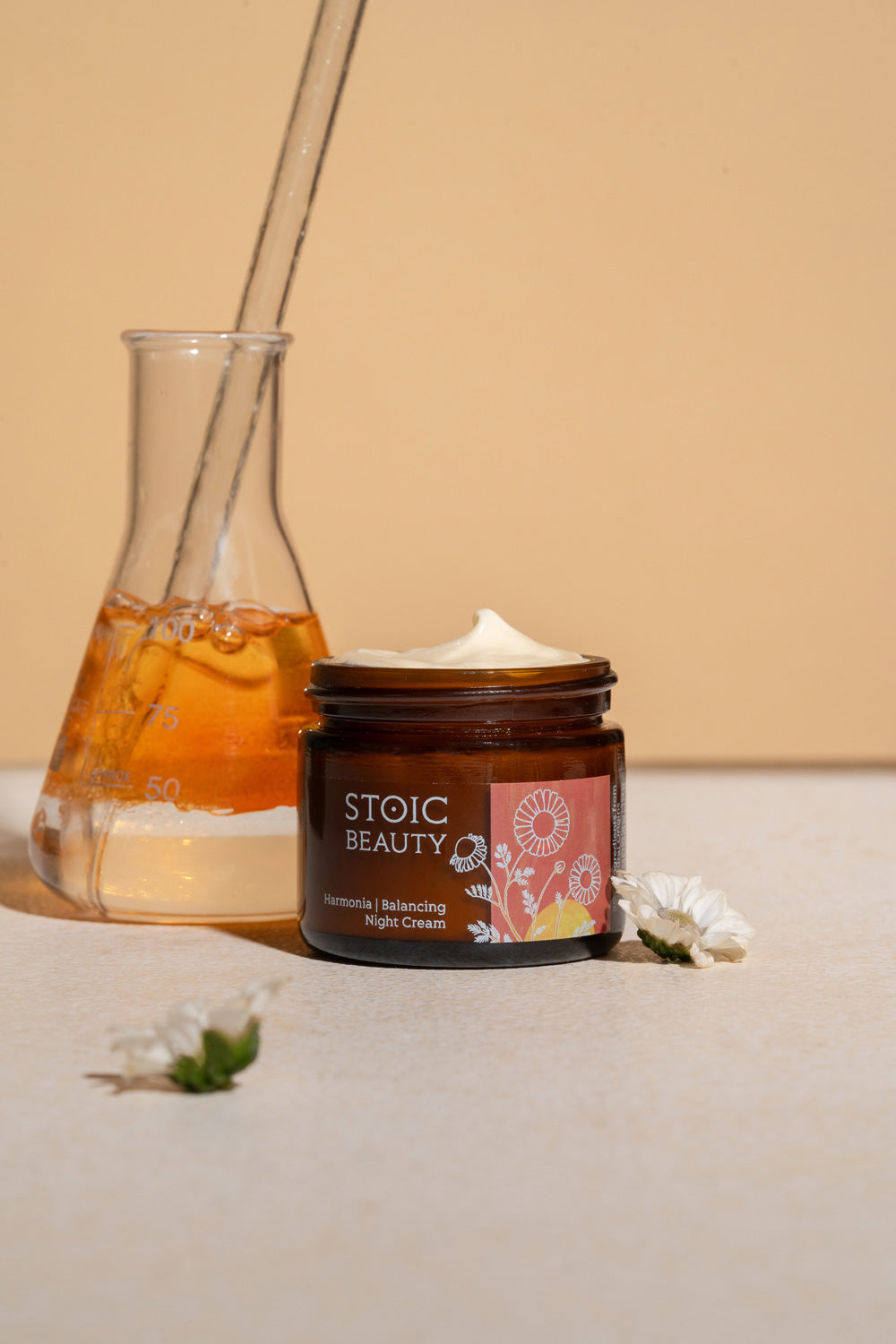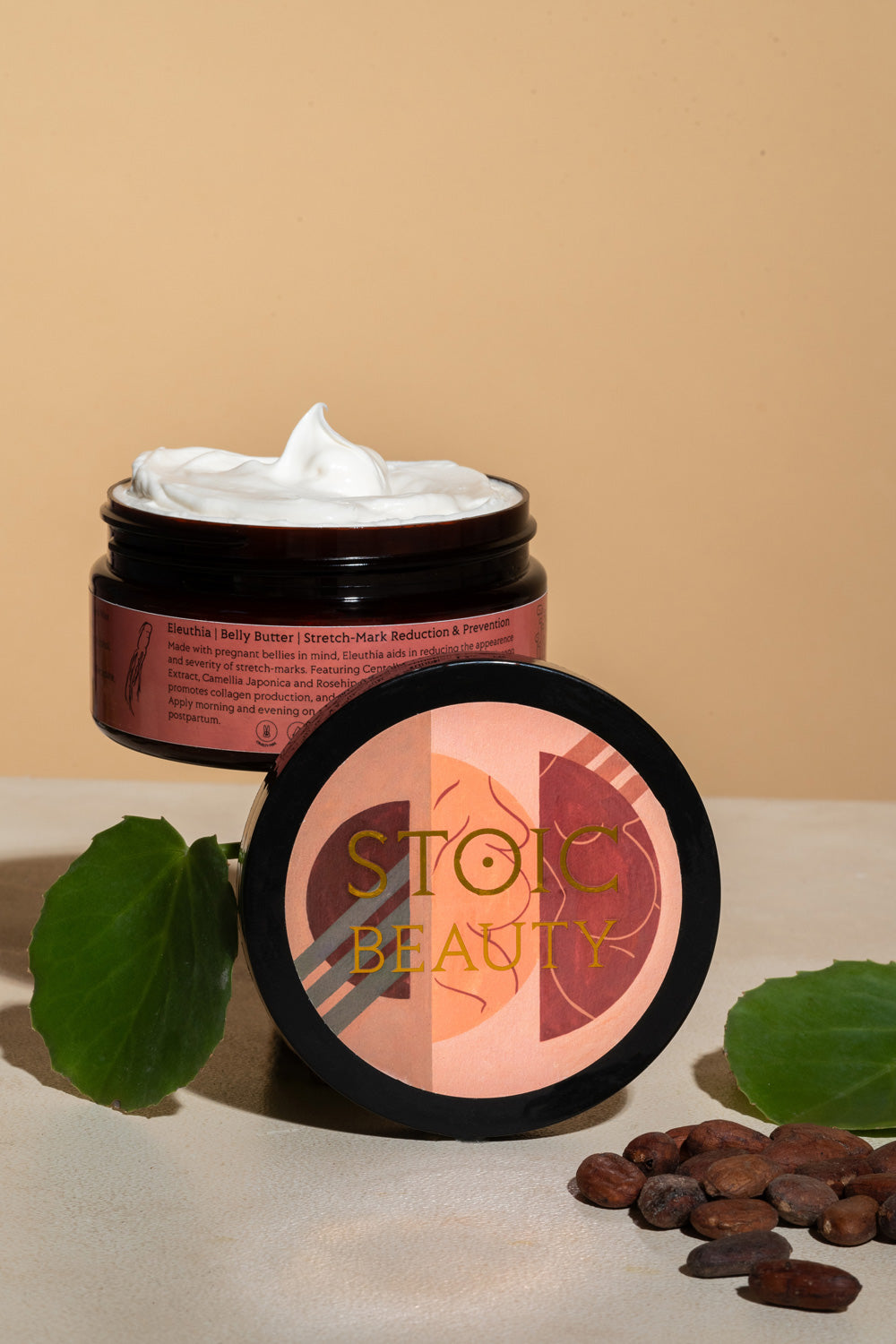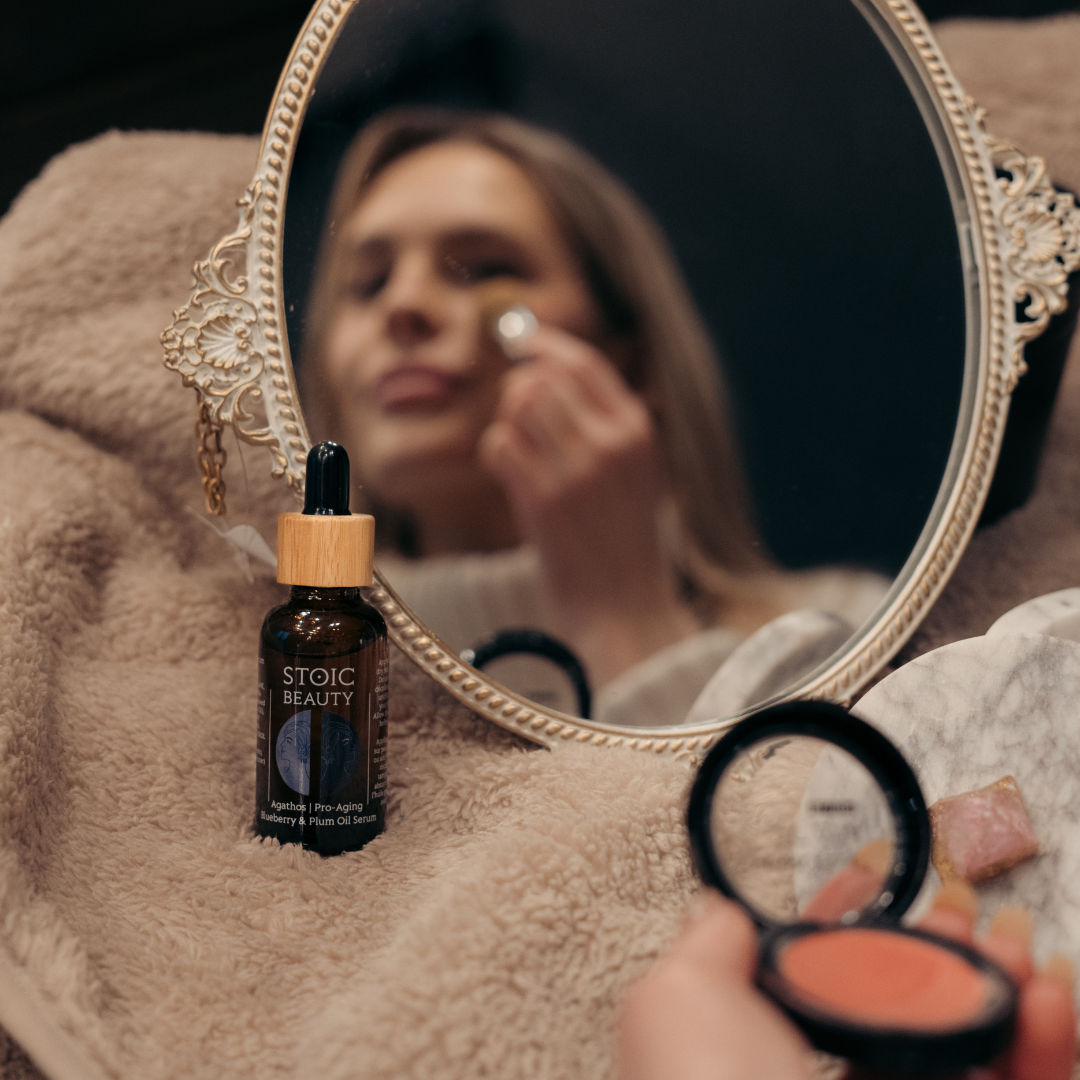
We’re not big on fear-mongering here at Stoic Beauty. There are a lot of excellent by-products from a wide range of industry that end up in our skincare, and often, these prove to be both safe and effective. However, we urge industry and consumers alike to exercise a stronger degree of caution when there is not enough data to prove the water-safety of an ingredient.
There are excellent regulatory bodies that study ingredient safety for skin. But, there is not necessarily equal rigour to regulate our kindness to our water systems! Silicones fall squarely inside of our motto: #anydoubtleaveitout.
Silicones are nowhere near as suspect as chemical sunscreens for environmental damage, but the jury is still out on how damaging silicones truly are!
So, this is a story about why we opted for silicone free, with natural silicone alternatives.
History of Silicone
Silicones (also called polysiloxanes) are a class of synthetic polymers made of alternating silicon (Si, an element just below carbon in the periodic table) and oxygen atoms linked to form linear or cyclic structures of varying size. Each silicon is also linked to two organic groups, most commonly methyl groups. This allows for a large variety of chemical structures with diverse physical and chemical properties from volatile liquids through heavy, greasy oils to rubber-like solids.
The story of silicones began in the 1940-ties, when an American inorganic chemist Eugene Rochow made methyl silicone, a novel inorganic polymer. He was pursuing his own interest, hiding his work from his bosses at General Electric who did not realize the value of the discovery until much later. A few more innovations by Rozchow himself and other brilliant chemists and the silicone career took off. Silicones are now used in many industries from construction to pharmaceutical and form cosmetics to electronics.
Skincare & Silicones
Since 1953 when Revlon introduced the first silicone containing hand cream Silicare, the use of silicones in skincare products has been ever increasing. Wide-range acceptance of the ingredient came in the 1970s when it was heavily used in deodorants and antiperspirants, largely due to pleasant skin feel and non-staining qualities.
Today, silicones are touted for offering a wide range of benefits, such as making skin look smoother and feel softer. Silicones create a barrier on top of your skin protecting it from loss of moisture. Finally, they improve spreading and wash-off resistance, confer anti-static and anti-freeze properties to hair care products. Sounds like a dreamy ingredient, right? Not so fast! The availability of cheap silicones makes it easy for formulators to neglect natural alternatives that in addition to comparable to silicones skincare benefits, can also nourish and strengthen skin natural defences.
Two of he most common silicones in cosmetic products are octamethylcyclotetrasiloxane (D4) and decamethylcyclopentasiloxane (D5) often referred to as cyclomethicones. Up to 1,000,000 tonnes per year of D4 and 100,000 tonnes of D5 is manufactured and/or imported in the EU alone. The United States produces or imports between 90,000 and 450,000 tonnes of cyclic siloxanes annually, according to U.S. Environmental Protection Agency estimates.
Why go Silicone Free?
The problem is that some silicones don’t easily break down to simple, innocuous small molecules. Unfortunately, this also means that silicones found in skincare products could eventually pollute the air (volatile cyclic silicones) and Earth’s waters. Once there, they may potentially cause an array of problems for both humans and the aquatic life. Given massive production and use of silicones, findings of their presence in arctic air, birds, fish, and mammals is a cause for great concern. Therefore, studies and a debate on their impact on the environment is now ongoing with arguments on both sides.
In 2019 Cosmetic Ingredient Review (CIR) Expert Panel concluded that amodimethicone and dimethicone are safe as used in cosmetic products. Similar conclusion has been reached earlier by Scientific Committee on Consumer Safety about D4 and D5, but upon re-consideration was narrowed to hair styling aerosols and sun care spray products. On the other hand, the European Chemicals Agency has classified D4 as persistent, bioaccumulative and toxic (PBT) substance and D5 as very persistent, and very bioaccumulative (vPvB) substance. D4 has been classified as reproductive toxicity category 2 meaning that some evidence of adverse effect on sexual function and fertility of humas and experimental animals exists.
Clearly, moving forward, more research needs to be done on this topic. In the meantime, however, it’s important to use caution when considering whether skincare products containing silicones are right for you - especially if you live near a lake or river!
Stay tuned for part 2 of this blog post, where we do a deep dive on natural alternatives for silicones!

